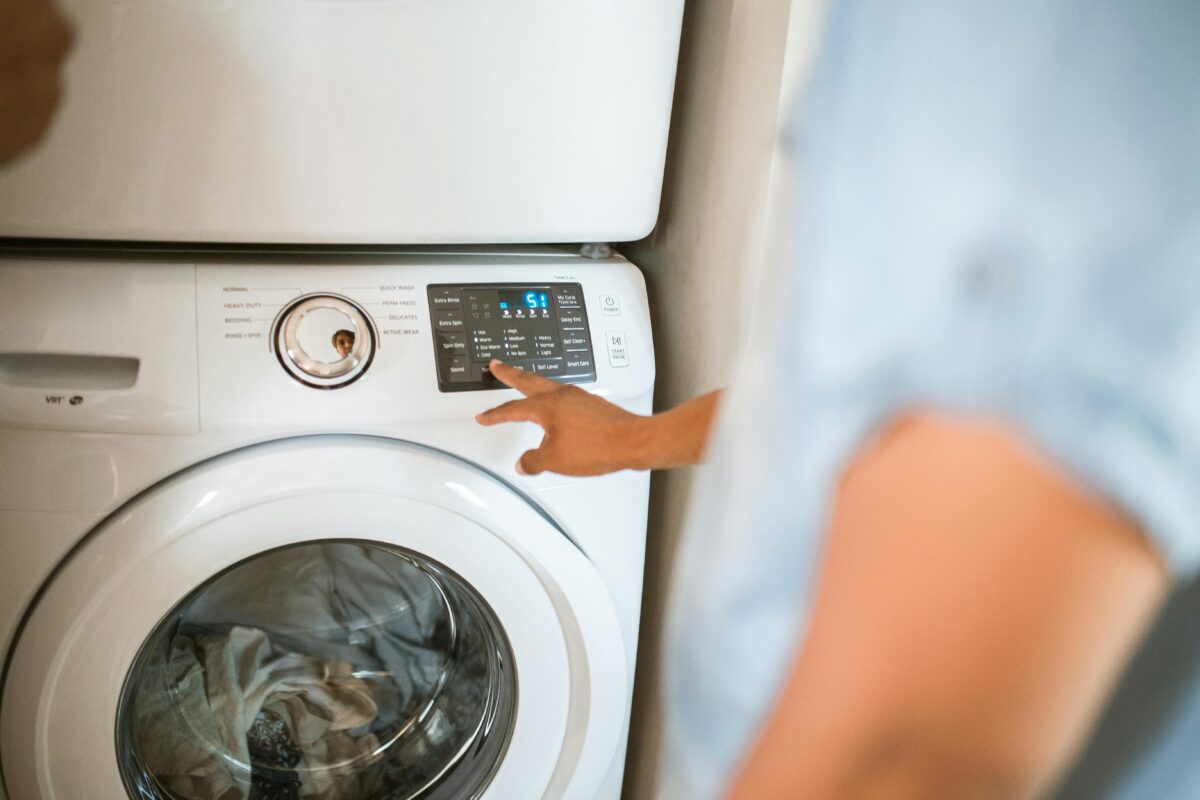Cleaning your washing machine is an essential task that often gets overlooked, yet it plays a crucial role in maintaining the efficiency and longevity of this vital appliance. A clean washing machine not only improves the performance of your laundry but also prevents unpleasant odors and mold growth. This guide will provide you with a comprehensive approach to ensure your washing machine remains in optimal condition, whether you own a front load or top load model.
Why Cleaning Your Washing Machine Matters
Over time, residue from detergent, fabric softeners, and dirt can accumulate inside your washing machine, leading to unpleasant smells and decreased efficiency. Regular cleaning helps to eliminate these build-ups, ensuring that your laundry comes out fresh and clean. Additionally, a well-maintained washing machine can prevent costly repairs and extend the life of the appliance.
To maintain your washing machine’s performance, it’s recommended to clean it:
- Monthly for front load washers
- Every three months for top load washers
- After washing heavily soiled items or pet bedding
What You’ll Need: Cleaning Supplies and Tools
Gather the following supplies before starting the cleaning process:
- White vinegar
- Baking soda
- Soft cloths or sponges
- Old toothbrush
- Commercial washing machine cleaning tablets (optional)
- Bucket
- Water
Steps to Clean a Front Load Washing Machine
Preparing the Washer
Begin by ensuring the machine is empty. Remove any items from the drum and check the rubber gasket for debris.
Cleaning the Drum
- Pour two cups of white vinegar directly into the drum.
- Run a hot water cycle (use the cleaning cycle if available).
Cleaning the Dispenser Drawer
- Remove the detergent dispenser drawer.
- Soak it in warm, soapy water for 15-20 minutes.
- Scrub with an old toothbrush to remove any residue.
- Rinse and let it dry before reinserting.
Cleaning the Gasket
- Wipe the rubber gasket with a cloth soaked in vinegar.
- Pay attention to crevices to remove any trapped debris.
Final Touches
- Run another hot water cycle with one cup of baking soda to deodorize.
- Leave the door open to dry out the interior and prevent mold.
Steps to Clean a Top Load Washing Machine
Preparing the Washer
Ensure the machine is empty before you begin the cleaning process.
Cleaning the Drum
- Fill the washer with hot water, setting it to the largest load size.
- Add one cup of vinegar and let it agitate for a minute.
- Pause the cycle and let the solution sit for about an hour.
Dispenser Cleaning
- Remove the fabric softener and detergent dispensers.
- Soak them in warm, soapy water for 15-20 minutes.
- Scrub with a toothbrush and rinse thoroughly.
Cleaning the Agitator and Drum
- After the hour has passed, resume the cycle to agitate the cleaning solution.
- Once complete, run a second cycle with just water to rinse.
Final Steps
- Wipe the lid and edges with a cloth soaked in vinegar.
- Leave the lid open to dry and prevent odors.
Steps to Clean Washing Machine Parts (Dispenser, Gasket, Filter, Drum)
Dispenser Drawer Cleaning
Follow the steps outlined for both front load and top load machines to ensure the dispenser is free from build-up and residue.
Gasket Cleaning
For front load washers, regularly wipe the gasket with vinegar to prevent mold growth. For top load washers, ensure the lid and edges are clean after each wash.
Filter Cleaning
- Locate the filter, typically at the bottom of the machine.
- Remove it carefully and rinse under warm water.
- Check for any debris and clean thoroughly.
Drum Cleaning
Regularly running vinegar and baking soda cycles will help keep the drum clean and odor-free.
Using Washing Machine Cleaning Tablets vs. DIY Solutions
Both commercial cleaning tablets and DIY solutions like vinegar and baking soda can be effective. Tablets are convenient and specifically formulated for washing machines, while DIY methods are cost-effective and use common household items. Choose based on your preference and availability.
How to Remove Odors and Mold from Your Washer
Identifying the Source of Odors
Common sources of odors include damp clothes left in the machine, residue build-up, and mold in the gasket. Regular cleaning can prevent these issues.
Effective Odor Removal Techniques
- Run a cycle with hot water and two cups of vinegar.
- Follow up with a second cycle using baking soda.
- Wipe down all surfaces with vinegar to eliminate lingering smells.
Tips for Preventing Build-Up and Keeping Your Washer Fresh
- Leave the door open after each wash to allow air circulation.
- Use the appropriate amount of detergent to avoid excess residue.
- Regularly check and clean the filter to prevent clogs.
- Wipe the gasket and drum after each use.
- Run a cleaning cycle every month.
Common Washing Machine Cleaning Issues
Residue Build-Up
If you notice residue in your washer, reduce detergent usage and increase cleaning frequency.
Odors Persisting After Cleaning
Try running an additional cycle with vinegar and ensure all parts are thoroughly dried.
Clogs in the Dispenser
If the dispenser is clogged, soak and scrub it more frequently to remove build-up.
Regular cleaning of your washing machine is vital for maintaining its efficiency and preventing odors and mold.
Follow the recommended cleaning schedules, use the right supplies, and keep an eye on removable parts to extend the life of your appliance.
